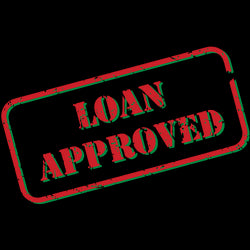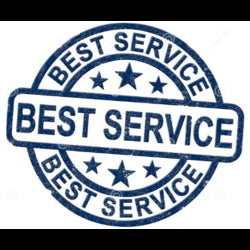
When property owners ask "do metal sheds leak," the answer requires understanding both the inherent characteristics of metal construction and the quality differences between various shed manufacturers. While metal sheds can experience leaking issues, these problems are largely preventable through proper selection, installation, and maintenance practices that ensure decades of reliable, weather-resistant storage.
The reality is that leak problems in metal sheds stem from specific, identifiable causes rather than inherent flaws in metal construction itself. Understanding these causes and implementing proven prevention strategies allows property owners to enjoy the benefits of metal shed storage without concerns about moisture infiltration or weather damage.
Understanding the Truth: Do Metal Sheds Leak More Than Other Materials?

The question "Do metal sheds leak?" often arises from misconceptions about metal construction and comparisons with traditional wooden or vinyl alternatives. Metal sheds, when properly manufactured and installed, provide excellent weather protection that rivals or exceeds other storage shed materials.
Metal Shed Leak Myths vs. Reality
The misconception that metal sheds inherently leak more than other materials stems from experiences with low-quality products and improper installation practices. High-quality metal sheds from reputable manufacturers incorporate advanced weatherproofing technologies and precision engineering that effectively prevent water infiltration.
Key facts about metal shed water resistance:
-
Material properties: Metal panels themselves are completely waterproof and non-porous
-
Joint design: Modern metal sheds feature overlapping panel systems that channel water away from seams
-
Fastener technology: High-quality weather-resistant fasteners with proper gaskets prevent penetration points
-
Coating protection: Advanced protective coatings resist corrosion and maintain long-term weather resistance
Comparative Leak Analysis: Metal vs. Other Materials
Understanding how metal sheds compare to alternative materials helps property owners make informed decisions based on actual performance data rather than assumptions.
Material comparison for leak resistance:
-
Metal sheds: Excellent long-term resistance when properly manufactured and installed
-
Wooden sheds: Vulnerable to warping, shrinking, and expansion that creates gaps over time
-
Vinyl sheds: Good resistance but potential for expansion/contraction issues in extreme temperatures
-
Resin sheds: Moderate resistance with concerns about UV degradation and brittleness
Primary Reasons Why Some Metal Sheds Experience Leaking
When property owners experience leaking in metal sheds, specific identifiable factors typically contribute to these issues. Understanding these causes enables both prevention and effective repair strategies.
Poor Quality Construction and Materials
The foundation of leak prevention begins with selecting metal sheds manufactured with appropriate materials and construction standards. Budget-oriented products often compromise on critical weatherproofing elements that lead to premature failure.
Quality indicators for leak-resistant metal sheds:
-
Panel thickness: Heavier gauge steel resists denting and maintains structural integrity
-
Galvanized coating: Hot-dipped galvanizing provides superior corrosion protection compared to painted finishes
-
Reinforced connections: Properly engineered joint systems prevent gap formation over time
-
Weather-resistant fasteners: Stainless steel or galvanized fasteners with appropriate gaskets
Installation Errors and Foundation Issues
Even high-quality metal sheds can develop leaking problems when installation procedures are not followed correctly or when foundation preparation is inadequate.
Critical installation factors:
-
Foundation levelness: Uneven foundations create structural stress that can open gaps in panel connections
-
Proper fastener torque: Over-tightening or under-tightening fasteners affects gasket compression and seal integrity
-
Panel alignment: Misaligned panels create gaps that allow water infiltration
-
Door and window fitting: Proper adjustment ensures weather seals function effectively
Environmental Factors and Maintenance Neglect
External conditions and maintenance practices significantly impact the long-term leak resistance of metal sheds, regardless of initial quality.
Environmental considerations:
-
Drainage around structure: Poor site drainage allows water accumulation that can overwhelm weatherproofing systems
-
Tree proximity: Overhanging branches can damage panels and deposit debris that blocks drainage systems
-
Extreme weather exposure: Repeated freeze-thaw cycles and high winds can stress connections over time
-
Maintenance schedule: Regular inspection and minor repairs prevent small issues from becoming major leaks
Do Metal Sheds Leak: Comprehensive Prevention Strategies
Preventing leaks in metal sheds requires a systematic approach that addresses selection, installation, and ongoing maintenance considerations. These strategies provide reliable protection against water infiltration throughout the structure's service life.
Quality Selection Criteria
The first line of defense against metal shed leaking involves selecting products engineered for superior weather resistance and long-term durability.
Essential quality features:
-
Heavy-duty galvanized steel construction for maximum corrosion resistance
-
Overlapping panel systems that channel water away from connections
-
Weather-resistant door and window seals designed for long-term performance
-
Reinforced roof systems capable of handling snow loads and wind stress
-
Comprehensive warranty coverage indicating manufacturer confidence in weatherproofing
Professional Installation Techniques
Proper installation techniques significantly impact the long-term leak resistance of metal sheds, making attention to detail during assembly crucial for optimal performance.
Installation best practices:
-
Foundation preparation: Create level, well-draining foundation with appropriate materials
-
Panel alignment: Ensure precise alignment before final fastening to maintain weather seals
-
Fastener installation: Use appropriate torque specifications to compress gaskets without over-stressing
-
Seal application: Apply appropriate sealants at connections, vents, and penetrations
-
Final inspection: Conduct thorough inspection of all connections and seals before use
Ongoing Maintenance Programs
Regular maintenance prevents minor issues from developing into significant leaking problems while extending the overall service life of metal sheds.
Maintenance schedule recommendations:
Monthly inspections:
-
Visual inspection of exterior panels for damage or loose fasteners
-
Check door and window operation and seal condition
-
Clear debris from gutters and drainage areas
-
Verify proper ventilation system operation
Seasonal maintenance:
-
Detailed inspection of roof and wall panel connections
-
Lubrication of door and window hardware
-
Touch-up of scratched or damaged protective coatings
-
Sealant inspection and renewal as needed
Annual comprehensive review:
-
Professional inspection of structural components
-
Foundation and drainage assessment
-
Complete weatherproofing system evaluation
-
Planning for preventive repairs or upgrades
Effective Repair Solutions: Addressing Metal Shed Leaks
When leaks do occur in metal sheds, prompt and appropriate repair measures can restore weather resistance and prevent further damage to stored contents.
Leak Detection and Assessment
Accurate identification of leak sources enables targeted repairs that address root causes rather than simply treating symptoms.
Systematic leak detection process:
-
Visual inspection during rainfall: Observe active leak patterns to trace water entry points
-
Internal moisture mapping: Document all wet areas to understand water flow patterns
-
Fastener inspection: Check all visible fasteners for looseness, corrosion, or missing gaskets
-
Seal evaluation: Assess condition of all weatherproofing seals and caulked joints
-
Structural assessment: Verify structural integrity and proper panel alignment
Targeted Repair Techniques
Different types of leaks require specific repair approaches that address the underlying cause while restoring effective weather protection.
Fastener-related repairs:
-
Replace corroded or damaged fasteners with appropriate galvanized alternatives
-
Install new gaskets or washers to restore compression seals
-
Apply appropriate thread sealants to prevent water infiltration through fastener holes
-
Ensure proper torque specifications to maintain seal integrity without panel damage
Panel and seam repairs:
-
Apply high-quality metal roofing sealant to gaps in panel connections
-
Install weatherproofing tape over problem seams before final sealing
-
Replace severely damaged panels that cannot be effectively repaired
-
Realign panels if structural settling has created gaps
Foundation and drainage improvements:
-
Improve site drainage to prevent water accumulation around structure
-
Install or repair gutters to manage roof runoff effectively
-
Seal foundation penetrations where water might enter structure
-
Level foundation if settling has created structural stress
Choosing Premium Metal Sheds That Resist Leaking
When selecting a metal shed designed to resist leaking throughout its service life, quality construction and proven performance become paramount considerations.
Duramax Imperial Garage Excellence
For property owners seeking maximum protection against leaking, the Duramax Imperial Garage line represents the pinnacle of metal shed engineering. These structures incorporate hot-dipped galvanized steel construction, reinforced panel systems, and weather-resistant design features that provide decades of reliable protection.
The Duramax 12x20 metal garage exemplifies superior weather protection through its ridge-reinforced walls, metal truss roof support system, and professional-grade construction that handles up to 20 pounds of snow per square foot without compromising weather resistance.
Alternative Storage Solutions
For applications requiring different size configurations or specific features, Duramax Sheds Direct offers comprehensive options that maintain excellent weather protection standards.
The Duramax sidemate shed 00625 provides compact storage with included foundation components and weather-resistant construction perfect for tools and equipment protection.
For extended storage needs, consider the Duramax sidemate 4x10, which offers additional capacity while maintaining the same leak-resistant design principles and construction quality.
Advanced Weatherproofing Technologies for Metal Sheds
Modern metal shed manufacturing incorporates sophisticated weatherproofing technologies that significantly exceed traditional protection methods and provide superior long-term performance.
Galvanizing and Protective Coatings
The foundation of leak prevention in premium metal sheds lies in advanced protective coating systems that prevent corrosion and maintain structural integrity throughout decades of service.
Hot-dipped galvanizing process:
-
Zinc coating application: Molten zinc creates metallurgical bond with steel substrate
-
Self-healing properties: Minor scratches heal automatically through galvanic action
-
Corrosion resistance: Provides decades of protection against rust and deterioration
-
Paint adhesion: Creates ideal surface for additional protective paint systems
Engineered Connection Systems
Modern metal shed design incorporates sophisticated connection systems that maintain weather seals while accommodating normal structural movement from temperature fluctuations and settling.
Advanced connection features:
-
Overlapping panel design: Multiple water-shedding surfaces prevent infiltration
-
Compression gasket systems: Maintain consistent seals under varying conditions
-
Expansion joint accommodation: Allow structural movement without compromising seals
-
Redundant sealing systems: Multiple protection layers prevent single-point failures
Climate-Specific Design Adaptations
Premium metal sheds incorporate design features specifically engineered for various climate conditions, ensuring optimal performance regardless of local weather patterns.
Climate adaptation features:
-
Snow load engineering: Reinforced roof systems for areas with heavy winter precipitation
-
Wind resistance design: Enhanced fastening systems for high-wind environments
-
Drainage optimization: Roof pitch and gutter systems designed for local rainfall patterns
-
Thermal expansion management: Connection systems that accommodate temperature-induced movement
Long-Term Performance and Value Considerations
Understanding the long-term performance characteristics of metal sheds helps property owners make informed decisions about leak prevention investments and maintenance strategies.
Lifecycle Cost Analysis
While initial investment in quality metal sheds may exceed budget alternatives, the long-term cost advantages become significant when considering maintenance requirements and replacement schedules.
Cost factors over 20-year period:
-
Premium metal shed: Higher initial cost, minimal maintenance requirements, no replacement needed
-
Budget metal shed: Lower initial cost, frequent repairs, potential early replacement
-
Wooden shed: Moderate initial cost, regular maintenance requirements, moderate replacement timeline
-
Maintenance cost comparison: Premium metal sheds typically require 70% less maintenance than alternatives
Performance Warranty Considerations
Comprehensive warranty coverage provides insight into manufacturer confidence in leak resistance and overall product durability.
Warranty evaluation criteria:
-
Coverage duration: Length of warranty period indicates expected service life
-
Scope of protection: What specific components and issues are covered
-
Transferability: Whether warranty coverage transfers to subsequent property owners
-
Claim process: Ease and reliability of warranty claim procedures
Environmental Impact and Sustainability
Metal shed selection decisions increasingly consider environmental impact and sustainability factors, with leak prevention playing a crucial role in long-term environmental performance.
Material Lifecycle Assessment
The environmental impact of metal sheds depends significantly on service life and maintenance requirements, making leak prevention crucial for sustainability.
Environmental considerations:
-
Material recyclability: Steel components are completely recyclable at end of service life
-
Energy efficiency: Proper weatherproofing reduces heating/cooling energy requirements
-
Maintenance chemicals: Leak-resistant designs eliminate need for frequent resealing treatments
-
Replacement frequency: Durable construction reduces environmental impact through extended service life
Sustainable Maintenance Practices
Implementing environmentally responsible maintenance practices supports both leak prevention and environmental stewardship.
Eco-friendly maintenance approaches:
-
Low-VOC sealants: Choose environmentally friendly sealing compounds
-
Water conservation: Implement efficient cleaning and maintenance water usage
-
Material reuse: Salvage and reuse components during repairs when possible
-
Preventive strategies: Focus on prevention rather than reactive repairs to minimize environmental impact
Conclusion
The question "do metal sheds leak" has a nuanced answer that depends entirely on quality, installation, and maintenance factors rather than inherent characteristics of metal construction. High-quality metal sheds from reputable manufacturers provide excellent leak resistance that meets or exceeds alternative materials when properly selected, installed, and maintained.
The key to leak-free metal shed ownership lies in investing in quality construction, ensuring proper installation procedures, and implementing regular maintenance programs that address minor issues before they become significant problems. Premium manufacturers like Duramax incorporate advanced weatherproofing technologies and proven design principles that provide decades of reliable weather protection.
Property owners who prioritize quality selection and follow recommended maintenance practices can expect leak-free performance throughout the entire service life of their metal sheds. The combination of superior materials, engineered design features, and proper care creates storage solutions that protect valuable contents regardless of weather conditions.
For property owners seeking leak-resistant storage solutions that provide long-term value and reliability, premium metal sheds represent the optimal choice for protecting tools, equipment, and other valuable items from moisture damage while maintaining their appearance and functionality for decades of dependable service.
Frequently Asked Questions
Do metal sheds leak more than wooden or vinyl sheds?
No, high-quality metal sheds do not leak more than other materials when properly manufactured and installed. Metal panels are completely waterproof, and modern metal sheds incorporate advanced weatherproofing systems that often provide superior protection compared to wooden sheds that can warp or vinyl sheds that may expand and contract. The key is selecting quality products with proper galvanized coatings and engineered connection systems.
What are the most common causes of leaks in metal sheds?
The most common causes include loose or corroded fasteners, gaps in panel connections due to poor installation or structural settling, damaged protective coatings that allow corrosion, inadequate foundation preparation, and lack of regular maintenance. Most leaks occur at connection points rather than through the metal panels themselves, making proper installation and maintenance crucial.
How can I prevent my metal shed from leaking?
Prevention involves selecting quality sheds with galvanized construction and weather-resistant features, ensuring proper installation on level foundations with correct fastener torque, implementing regular maintenance schedules including fastener inspection and seal renewal, maintaining proper drainage around the structure, and addressing minor issues promptly before they become major problems.
Can I repair leaks in my metal shed myself?
Many metal shed leaks can be repaired with basic DIY skills using appropriate materials like metal roofing sealant, replacement fasteners with gaskets, and weatherproofing compounds. However, structural issues, extensive panel damage, or complex drainage problems may require professional assistance. Always prioritize safety and proper material selection for effective long-term repairs.
How long should a quality metal shed remain leak-free?
A properly manufactured, installed, and maintained metal shed should remain leak-free for 15-25 years or more. Premium sheds with hot-dipped galvanizing and reinforced construction can provide decades of leak-free service. Regular maintenance and prompt attention to minor issues significantly extend leak-free performance and overall service life.






